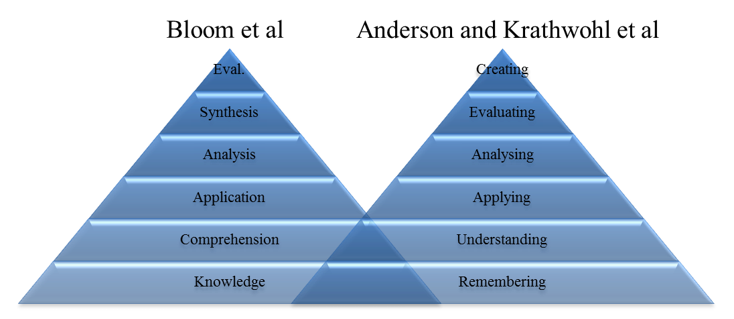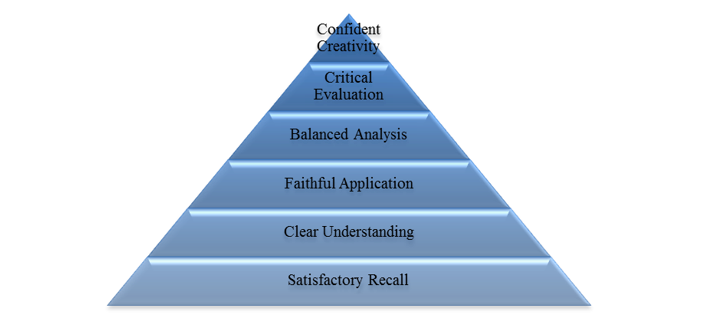Dr Matthew Williams, Access Fellow at Jesus College, Oxford, shares his belief in the importance of “confident creativity” as the key to developing sustained effort and a lasting love of learning.
I am a fellow and tutor in politics at Jesus College, Oxford, and I’d like to share some thoughts on how students can be energised to “work harder”. Specifically how do we encourage sustained effort, leading to improved attainment? What follows are reflections on a decade of teaching and schools outreach work at Oxford and Reading Universities. There is a mixture of theory here, but readers should be warned there will also be big dollops of unscientifically personal recall.
As an undergraduate student of politics at the University of Bristol, the most significant learning experience came during seminars on the British Labour Party. At first, I was fairly indifferent on the subject, but the seminars entailed a mixture of traditional essay-based research and more flashy simulation-based learning. On the latter, we had a Cabinet meeting in our seminar with each of us playing real characters. I was Jim Callaghan, and I had to prepare Cabinet papers, work out strategy and tactics in order to win a fight with, in particular, Tony Benn!
The experience brought everything to life. The theoretical and practical came together, and I have to this day never forgotten the specifics of that fight in late 1976. On reflection, the primary effect of the simulation was the transformation of the subject matter from work into study. Studying is not work in the sense of being performed for someone or something else’s benefit. Instead, studying is intrinsically pleasurable. Whilst many students are motivated by long-term payoff (career prospects, reputation, power etc) many, like me, see more immediate feedback. This particular teaching style transformed the 9am walk to lectures from a reluctant trudge to an enthusiastic commute. It was revelatory.
Demystifying the means of achieving distinction
Ever since those seminars I have aspired in my personal and professional life to transform work into study. The key ingredient used by the seminar tutor was positive motivation. He made clear his interest was in us and our ideas, rather than our performance in the exam and the reputation of the university. As such, he did not want us to regurgitate the literature, rather he wanted us to know the literature so we could analyse it critically whilst presenting our own original contributions.
This was liberating. All of sudden the most complex elements of social democratic ideology and post-industrial economics were not prohibitively intimidating; they were required reading for anyone wishing to have their voice heard. In this process, we had to acknowledge we could contribute to a debate despite our relative academic inexperience. The tutor was clear: good ideas are not the monopoly of tenured professors. If we wanted to, we were perfectly capable of contributing original theoretical insights and empirical discoveries. To achieve the distinction of a first class degree our work had to be creative and, crucially, the tutor made clear we were all capable of distinction if we wanted it.
This teaching style resonated with me because it demystified the means of achieving distinction. Previously, I had assumed distinction was a matter of talent, intelligence and luck – none of which I felt much graced with. Subsequently, I realised distinction meant creativity, and creativity needed energy and self-confidence.
Understanding the importance of “confident creativity”
“Confident creativity” is not my first teaching philosophy. For a job application in 2012 I proposed a similar philosophy focused on positive motivation and confident application of skills. Whilst this is seemingly the same philosophy, the older version was predicated on teaching as the transmission of knowledge, where now I see teaching more as developing and nurturing key skills. The transmission model prioritised interesting learning materials as the fundamental variable; whilst I still consider the materials to be important, they are secondary to the students’ nurtured development of complex skills. When students internalise the skills of processing complex information, they will find interest in practically all relevant materials, without the need for unrepresentatively “sexy” content. Even a 1970s Cabinet meeting can become enthralling!
The key change in my teaching philosophy has been the realisation that motivating students should encourage a sense of independent intellectual development. This change in emphasis can be represented as a synthesis of two learning outcome hierarchies, proposed by Bloom et al (left pyramid) and Anderson & Krathwohl et al (right pyramid).

I propose a synthesis of these taxonomies, fleshed out with qualifying adjectives:

Including qualifying adjectives in Anderson & Krathwohl et al’s hierarchy allows us to assess the learning objectives in greater detail, with clearer observable implications. Adding an extra level of nuance to the concepts enriches their meaning, without losing the parsimony and clarity which are such key strengths of the original taxonomy. The addition of adjectives could be criticised as creating needless tautologies – if, for instance, we assume confidence is a necessary condition of creativity. However, creativity can be achieved without confidence if it is accidental and the student is unaware of the merits of their creativity. We need to aim for confident creativity because it is significantly more sustainable and transferable for a student to create in confidence than to be creative by accident or with heavy-handed guidance.
Transferring this approach to different contexts
Critical reflexivity is a very personal journey, and the results of my personal reflections may not be transferable. Even the phrase “teaching philosophy” connotes a sense of philosophy as retroactive rationalisation of one’s own perspective, as opposed to the analytic use of the term as a clear, open and rigorous system of thought. As Nancy Chism states, somewhat ironically, “One of the hallmarks of a philosophy of teaching statement is its individuality.” Whilst a teaching philosophy is developed through self-reflection, it requires self-awareness before it can be applied to others. Notably, teachers are somewhat unusual in their relationship with knowledge. They relish the acquisition of knowledge as an intrinsic good, where motivation to learn is rarely absent and the desire to contribute is second nature.
But what is good for the goose is not necessarily good for the gander. For many students school and college is first and foremost about acquiring qualifications, and therefore simply an instrument for career advancement. As such, not all students want to achieve distinction, nor see the value in risking creative contributions when a less resistant path exists. For such students there is a risk that emphasis on creativity will alienate them from the subject and the teacher. Furthermore, the development of my teaching philosophy has primarily taken place at an elite university, where boundary-pushing and intellectual confidence is far less risk-laden than in other contexts. The unflinchingly liberal environment at Oxford ascribes considerable value to intellectual creativity, perhaps at the expense of consolidation. Yet there is little utility in a teaching philosophy that is contingent on where and for whom it applies.
Nevertheless, these concerns are surmountable. Yes, academics perhaps have a gilded view of knowledge, but only because they have internalised the skills of contributing knowledge to the point where it has become (for the most part) a pleasure. It is incumbent on academics to encourage students towards a similar relationship with the world. Whilst not all students will want or feel able to contribute genuine insights, “confident creativity” is the apex of the pyramid and there are other levels of learning available to differentiate between learners. The ambition should be to encourage confident creativity, but “critical evaluation” or “balanced analysis” will be satisfactory outcomes for many students. Learners should not be forced to fit a teaching style that alienates them and a degree of differentiation between students will be required with the proviso that “confident creativity” is unambiguously the preferred goal and should be encouraged as far as possible.
Ultimately, the point of education is to equip individuals with the skills to speak for themselves. This is best achieved when we mix up teaching styles, and jolt work into study.
References
- Anderson, L.W., Krathwohl, D.R., Airasian, P.W., Cruikshank, K.A., Mayer, R.E., Pintrich, P.R., Raths, J., & Wittrock, M.C. (eds) (2001) A Taxonomy for Learning, Teaching, and Assessing. (New York: Addison Wesley Longman Inc).
- Bloom, B.S., Engelhart, M.D., Furst, E.J., Hill, W.H., & Krathwohl, D.R. (eds) (1956) Taxonomy of Educational Objectives: The Classification of Educational Goals – Handbook 1: Cognitive Domain. (London, WI: Longmans, Green & Co Ltd).
- Chism, N. V. N. (1998) “Developing a Philosophy of Teaching Statement.” in Essays on Teaching Excellence 9(3) (Athens GA: Professional and Organizational Development Network in Higher Education).
- Pratt, D.D., & Collins, J.B. (2000) ‘The teaching perspectives inventory: Developing and testing an instrument to assess teaching perspectives’ Proceeding of the 41st Adult Education Research Conference.
About the author
Dr Matthew Williams is Access Fellow at Jesus College, University of Oxford, where he teaches and conducts research in the field of political studies. Known as “the Welsh College”, Jesus College has a long history of working with schools in Wales and has recently taken on responsibility for delivering the university’s outreach and access programmes across all regions of Wales. Read more.
Live webinar: “Developing sustained effort in able learners”
On 2 July Dr Williams is leading a free webinar for NACE members in Wales, exploring approaches to developing confident creativity and motivating learners to be ambitious for themselves. This is part of our current series supporting curriculum development in Wales. Find out more and book your place.





